Flying & fighting in the F-111: Interview with Aardvark Weapon System Officer Jim Rotramel
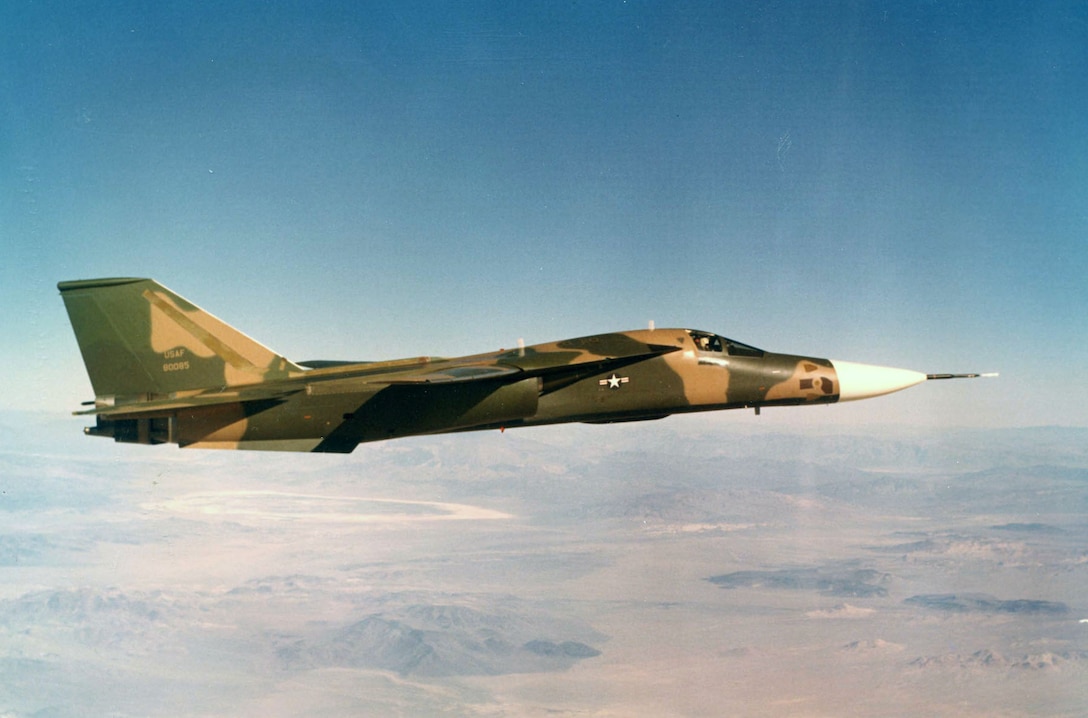
“I think the fastest anyone ever claimed to have gotten was Mach 2.91.”
Hans Christian Andersen’s story of ‘The Ugly Duckling’ tells of a swan’s egg unknowingly pushed into a duck’s nest. Once hatched, the bird endures a miserable life, awkward and unloved by its duck peers before learning he was really a swan. Once he joins a bevy of swans he finds acceptance and lives happily ever after. The F-111 had a similar life-story, pushed onto the Navy as a fighter interceptor as part a multi-service do-everything concept, it disappointed and was cancelled. After a dangerous and painful early life it emerged as an Air Force interdictor par excellence. Extremely long-ranged, carrying a fearsome bomb-load that could be delivered with remarkable ac curacy, the F-111 was a formidable Cold War warrior, proving its horrifically destructive power in the deserts of Iraq in 1991. We spoke to former USAF F-111 WSO Jim Rotramel to find out more about the mighty Aardvark.
Special thanks to David Riddel
What was the cockpit like? What are the pros and cons of side-by-side seating?
“First, you need to realise that the Navy insisted on side-by-side seating and an escape capsule as part of their plan to make the jet so heavy that they could justify getting out of the program. Also, their Korean War vintage F3D Skyknight and the F6D Missileer (pictured) that was replaced by the TFX also had side-by-side seating.”
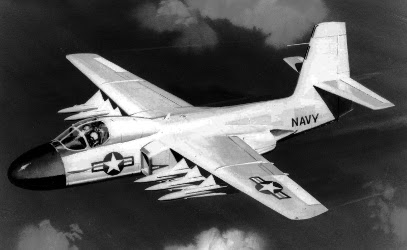
“The advantages were that it made communication between the crew members easier—I could point to an instrument I wanted the pilot to look at or show him a chart. The main disadvantage was that visibility out the other side of the jet was very limited.”
What were the best and worst things about the F-111?
“When everything was working, it was awesome. When everything didn’t work right, it could be awesome in a completely different way!”
We had a challenge within the squadron once to ‘attack’ a train station in Scotland from behind a hill so we wouldn’t be able to see the target until after the simulated ‘bomb’ had been released. I picked the route and offset aimpoints I wanted to use and off we went. Getting a good positional ‘fix’ required updating not only latitude and longitude, but also elevation. We approached the hill (small mountain) from over the water where I got an altitude calibration to take care of the elevation part of the equation. As we went up the back side of the mountain, there was a small rock outcropping where I took care of the latitude and longitude. We went into “the pull” and “released” our simulated bomb. As we cleared the hill, I switched to PAVE Tack video and saw a stone bridge just to the north of the train station. I was able to drag the cursors over to the train station by the time the ‘bomb’ impacted. When we got back home, the guy who set up the challenge admitted that the coordinates he’d given us were for the bridge, not the train station, figuring that no one would be that close and the bridge coordinates would be good enough. That was the last time I trusted anyone to give me target coordinates!
“After the Cold War ended, USAFE apparently invited some Soviet military to a friendship visit. As part of the visit they had a static display including the F-4, F-15, F-16, etc., and the F-111. By far, the Soviets were most interested in the F-111, shocking their American hosts. It turns out that, aside from the SR-71, the F-111 was the plane they considered the greatest threat.”
We had a mass launch exercise with airplanes from all over the UK in the air simultaneously. Our particular flight air refueled from a KC-135 and then was tasked to ‘attack’ a RAF Bloodhound SAM site in East Anglia not too far south of ’The Wash’ body of water that lays just north of East Anglia. There was a light ship moored in the middle of The Wash that we often used to take fixes off of. As we headed south, I put my cursors on the light ship, then as we were crossing the coast, I’d picked the end of a line of trees as a second offset. We flew right over the Bloodhound site at less than 500 feet. My pilot was pretty excited and the guys at the missile site really enjoyed the show, too!
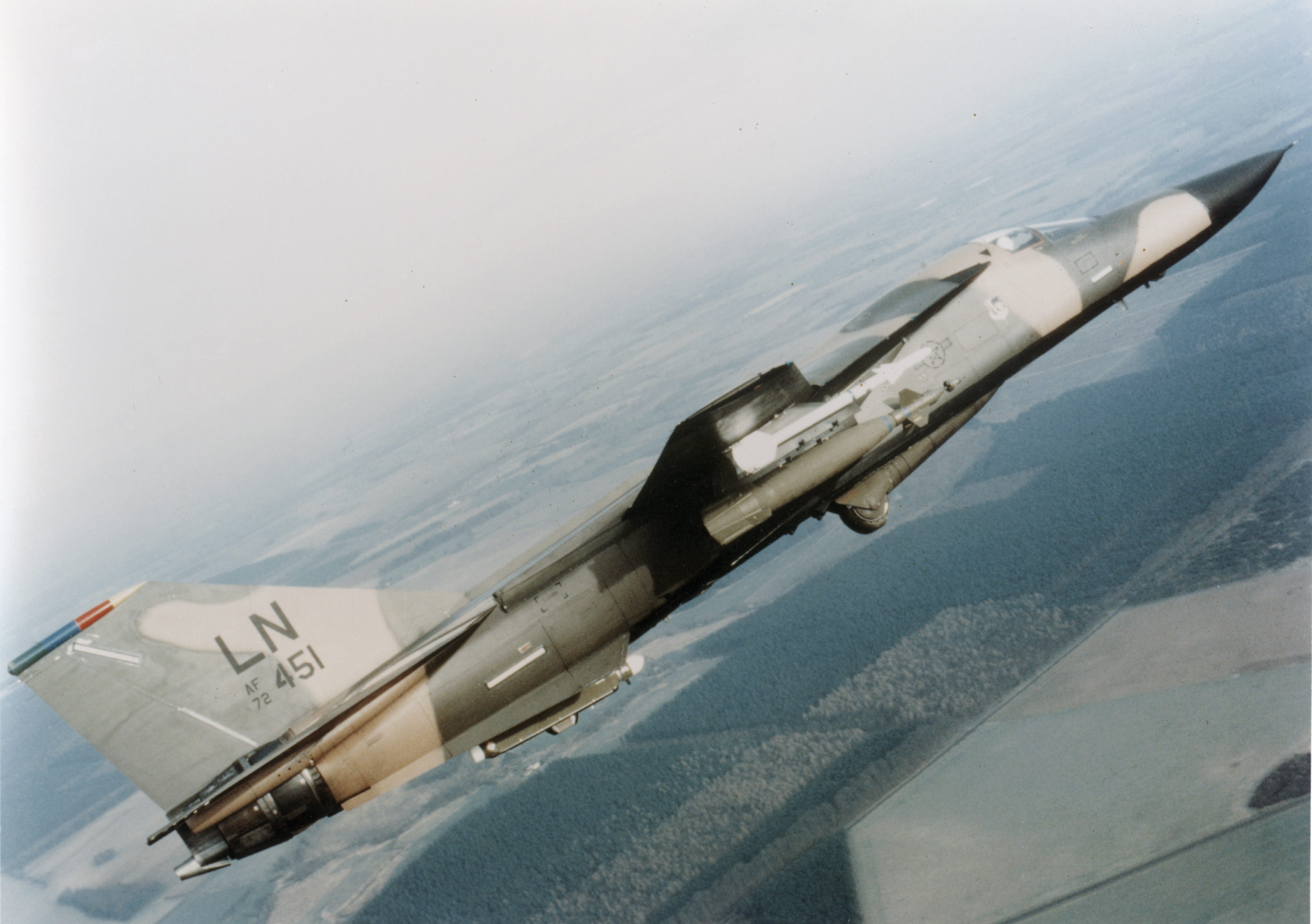
We deployed to Spain one spring instead of our normal trip to Turkey. While the night life was certainly better, the flying was much more restricted; with the exception of one day, we weren’t allowed to fly low level—just go to the bombing range and drop bombs. The F-111 carried 30,000 lbs. of fuel internally (more than a combat loaded F-16, including bombs). That was enough to stay aloft for nearly three hours including (in England) flying high level to and from Scotland, flying low level for a half hour or so and spending 15-30 minutes dropping practice bombs. So, with our flights in Spain pretty much limited to going to the range, we had a LOT of fuel to burn. Rather than spending a LOT of time in the landing pattern, we started picking out ‘targets’ to find on the base or in downtown Zaragoza using PAVE Tack. It was easy! Ridiculously easy! I remarked at the time that if we were ever unleashed in combat where we could attack from medium to high altitude instead of low level like we trained for, it would almost be unfair to those we were attacking. That is precisely what happened during Desert Storm.”
Enjoying this? Pre-order The Hush-Kit Book of Warplanes Volume 2 here

With which unit did you serve and on which models of the F-111?
“Trained on the F-111D in late 1981. F-111F WSO from 1982-87. F-111D WSO 1987-91.”
The top speed is quoted as M2.5 – did it ever reach such speeds? Could it?
“99% of the time was spent subsonic—going fast uses lots of gas and most of our missions required us to penetrate deep behind enemy lines so gas was always at a premium. But, if you needed to go fast, you could. Most of the really high speed stuff was done during Functional Check Flights. In the UK, when we flew up the east coast to Scotland, it took about 45 minutes. The FCFs did the high & fast part of the flight returning from Scotland—in about 15 minutes. I wasn’t an FCF guy, but there were stories of planes landing with their antennas melted off. One time we flew 70-2376, which had been Mountain Home’s bicentennial jet soon after an FCF and the paint at the leading edge of the inlets had partially burned off. revealing the b-c paint underneath.

“There were stories about guys seeing how fast the Vark would go. There was NO specified maximum speed. What we had was a heat sensor on the windscreen. When the sensor got hot enough, it cause a caution light to illuminate and an egg timer located behind the WSOs head to start. The warning was that if the timer reached five minutes, the windscreen would melt. I think the fastest anyone ever claimed to have gotten was M2.91. In any event no one ever saw the jet stop accelerating—everyone decided to back off before testing the egg timer…
In its early development it had many problems – do you think this is why only Australia was the only export user?
The UK dropped the TSR.2 in favour of the F-111K, but backed out when the wing structural issues arose and ended up with F-4K/M until getting Tornados. Aside from that issue, the F-111 was expensive to operate and that was probably a factor in the decision.”
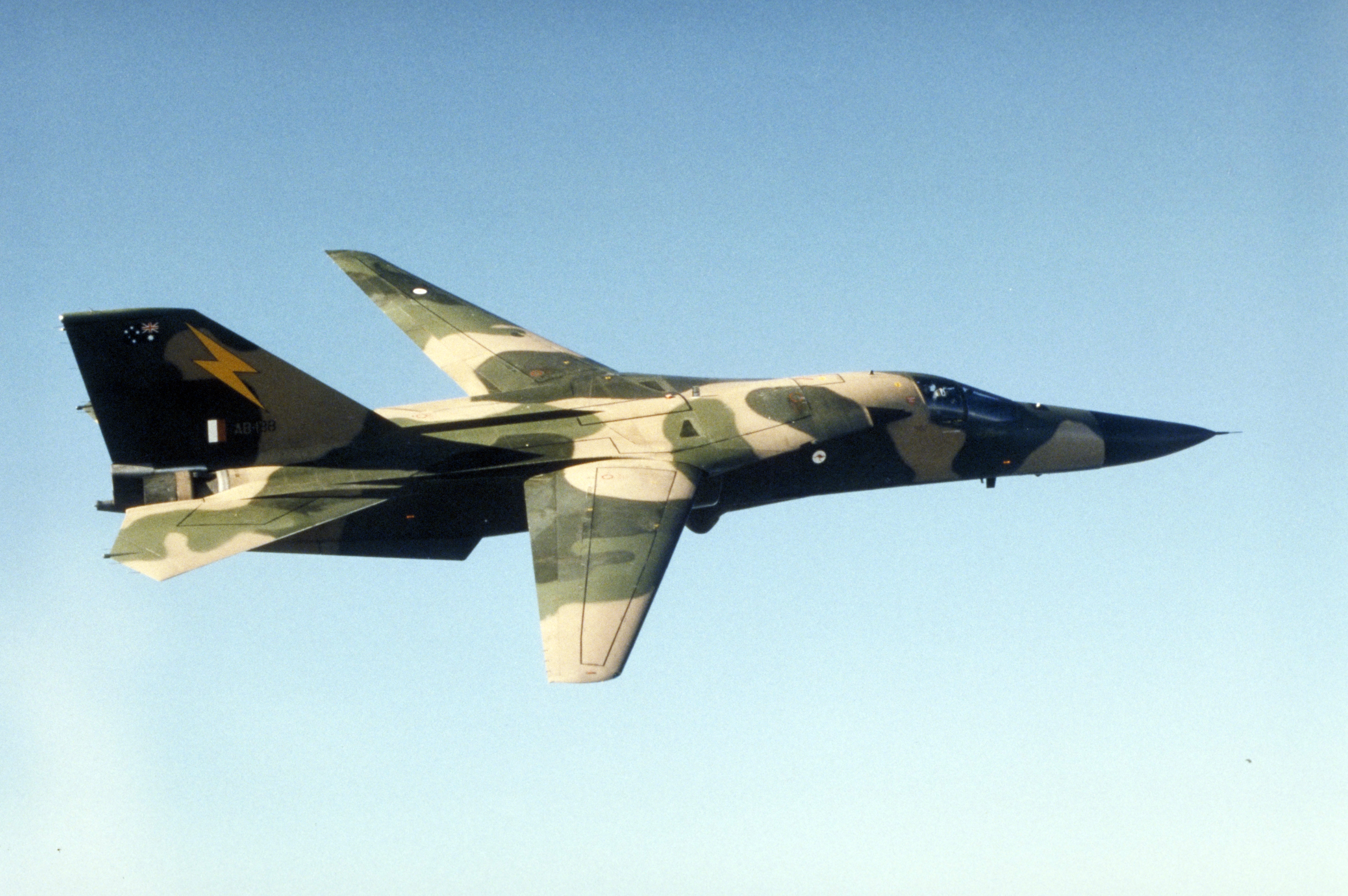

What equipment would you have liked added to the aircraft?
“For its time, it had top-of-the-line equipment. Toward the end, some jets even got GPS and multi-function displays, but that was after I left. Some of the stuff that came along later, like night vision goggles, synthetic aperture radar and digital map displays would have been useful. Also, a more reliable INS would have been VERY welcome.”
The Hush-Kit Book of Warplanes. Preorder your copy today here.
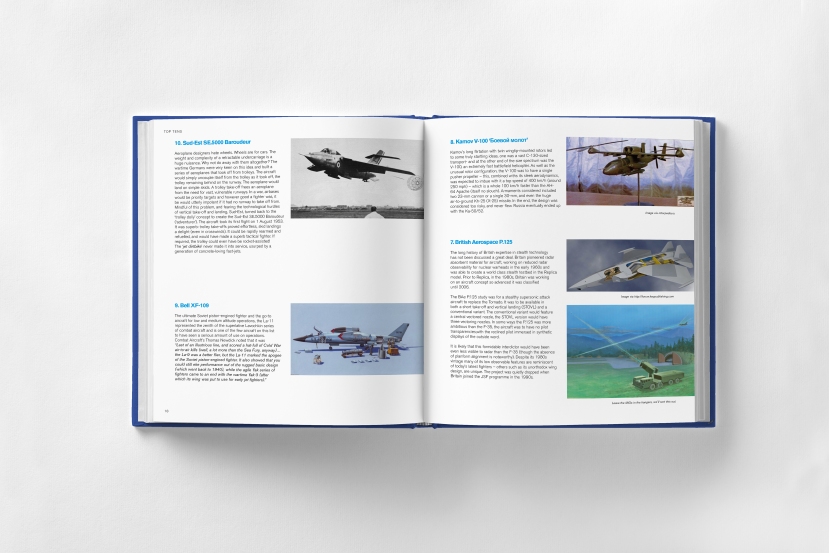
Was the EW/EW equipment good enough?
“Apparently, as none were lost during Desert Storm. We had internal ECM that was useful against older SAMs and ECM pods to deal with the newer systems.”
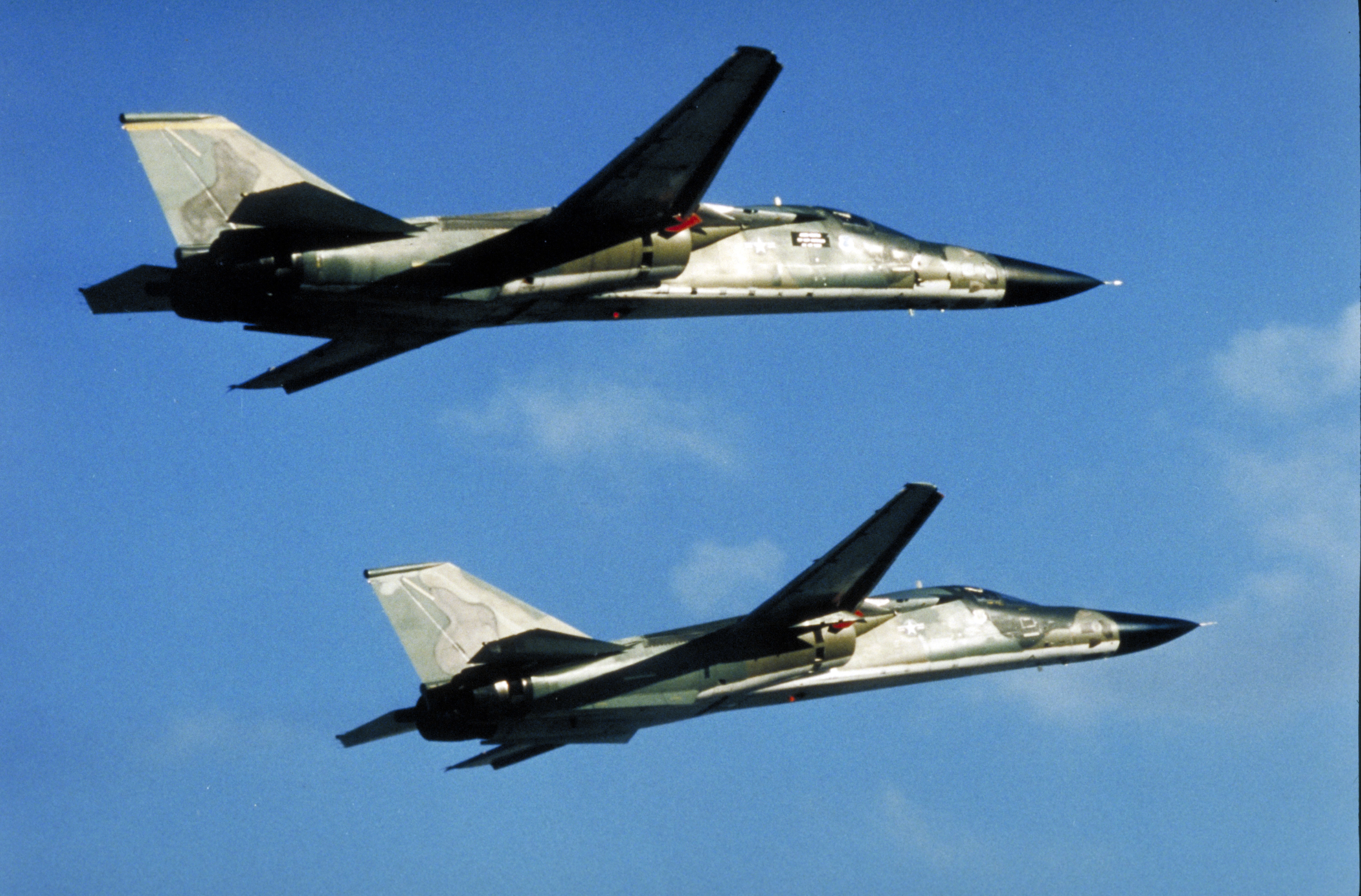
Why did Australia purchase the aircraft?
“The F-111 could carry a lot of bombs a long way—we could get deeper into Eastern Europe from Lakenheath than Tornados could from German bases. It handled about the same no matter what it was loaded up with. The RAAF needed a jet with long legs for it to have a creditable offensive capability. I suspect that was their main rationale for getting it, but you need to ask them to be sure.”
Do you miss the aircraft, have fond memories of it?
“It’s been 30 years, and you tend to remember the good bits and forget the bad ones. We lost six jets and two crews in the first 18 months I was at Lakenheath. Nobody who flew fast jets in those days didn’t know guys who were happy and healthy in the morning and didn’t go home that night. That said, it was the most fun job I ever had.”
What was the hardest system to master?

“A Test WSO from Edwards AFB, who’d flown lots of different aircraft, visited us at Lakenheath. He told us that the F-111F was the most challenging aircraft for WSOs in the USAF inventory—including the SR-71. Basically, if we could conquer the ‘F’ we could handle anything else the USAF could throw at us.”

The bombing range could be very challenging as it took about 13 steps to get a bomb to come off the airplane, so while you were trying to copy down the score from your previous bomb, you were also setting up the switches for the next bomb and getting back in the radar for its delivery.
The most problematic system was the inertial navigation system, which failed more often than anything else. There were backup procedures, but they were very workload intensive and not terribly effective.’
What are your feelings/thoughts on the Tornado and Su-24?

“The Tornado had better (newer) systems, but a much smaller range and payload capability than the Vark. As I understand it, the Russians referred to the Su-24 as the ‘Suitcase’. I’’ve heard that it only had a Doppler navigation system—no INS, so that would have limited its effectiveness. I wouldn’t trade the Vark for either, especially the Su-24.”

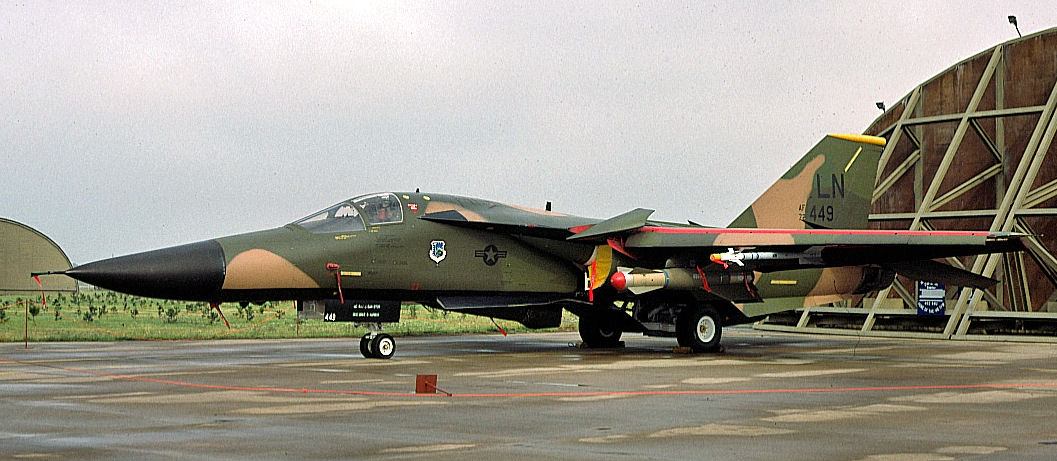
How combat effective was it?

“Ask the Iraqis. After Desert Storm, we learned that during daytime airfield personnel would hide in harden aircraft shelters (HAS) because they felt safe from attacks by fighters dropping unguided bombs. At night, they only felt safe outside the HASs because the F-111Fs would conduct attacks using a tactic called “consecutive miracles” where the first LGB would punch a hole in the HAS roof followed milliseconds later by a second bomb going through that hole to explode within the confines of the HAS totally devastating everything inside.
Likewise, Iraqi tank crews learned quickly that sleeping in their nice warm tanks at night wasn’t a good idea. They didn’t worry too much about the dumb bombs being dropped during the day, but when the F-111Fs showed up at night, it was one-LGB per tank. It was soon decreed that F-16s weren’t allowed to attack the tanks after 4PM so that the heat from their misses wouldn’t distract the F-111Fs crews at night that were actually destroying tanks. F-111Fs destroyed nearly as many tanks as A-10s.”

The Hush-Kit Book of Warplanes will feature the finest cuts from this site along with exclusive new articles, explosive photography and gorgeous bespoke illustrations. Pre-order The Hush-Kit Book of Warplanes here. Thank you. Our controversial merchandise shop is here and our Twitter account here @Hush_Kit. Sign up for our newsletter here. The Hush-Kit Book of Warplanes will feature the finest cuts from this site along with exclusive new articles, explosive photography and gorgeous bespoke illustrations. Pre-order The Hush-Kit Book of Warplanes here.

“As I sat out the war in New Mexico, I watched Gen. Schwarzkopf’s 5 o’clock follies (er briefings) every day. He never mentioned F-111s, not even crediting them for their ‘tank-plinking’ that allowed the ground war to start, but talked a lot about the USAF’s favourites, the F-15Es and F-117As. But nearly all the video shown was from F-111Fs! The most interesting thing to me was that the video was sometimes reversed or tilted to one side or the other. It turned out that a WSO from my squadron had been in charge of putting together the video clips used every day. He explained that the general couldn’t figure out from which directions the bombs were entering the video, so decreed that he always wanted them to come from the upper right corner!

After that war demonstrated the clear advantage of using smart bombs like those employed by the F-111F & F-117A the US pretty much abandoned “dumb bombs” and procured much better targeting pods than the LANTIRN pods used during Desert Storm by F-15Es. And the smart bombs themselves have been greatly improved.”
Tell me something I don’t know about the F-111…

“People who flew the MiG-23 described adjusting the wing sweep as a terrifying experience (actually, several things about the Flogger qualified for that description!). The F-111 (and other western variable geometry aircraft) had two trim systems, called parallel and series. Series trim is what the pilot controlled and acted like trim in any aircraft. Parallel trim was where the magic happened. It worked in background to automatically compensate for aerodynamic changes caused by the wings movement. I’ve watched the wings move and there was absolutely no physical sensation in the cockpit that anything was happening.”
What should I have asked you?
“After the Soviet Union collapsed, the military had to absorb the ‘peace dividend’. Big Air Force had never liked the F-111 (except when something actually needed to get done) and they rationalised that they would never need the F-111’s range and payload capability again, so they retired the last of the fighters in 1996. In 2001, that assumption was proved foolish when we found ourselves fighting in Afghanistan.”
What was considered the main threat nation and how would the F-111 have fared against its defences?
“The Soviet Union and Warsaw Pact were the obvious threat US F-111s were directed against, China for the RAAF. After the Cold War ended, USAFE apparently invited some Soviet military to a friendship visit. As part of the visit they had a static display including the F-4, F-15, F-16, etc., and the F-111. By far, the Soviets were most interested in the F-111, shocking their American hosts. It turns out that, aside from the SR-71, the F-111 was the plane they considered the greatest threat.”
Anything a F-111 could do that a F/A-18F can’t? How did you feel about the transition?
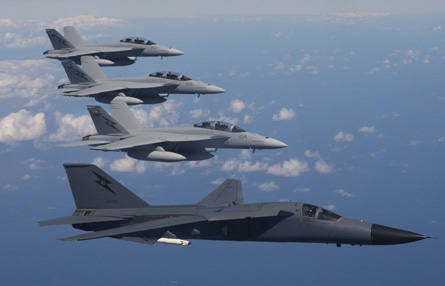
“Torch (aka dump and burn)?! After retiring from the USAF, I worked for the USN as a contractor, primarily on the F/A-18 programme. The Super Hornet systems are fantastic compared to what we had in the F-111. The main advantage the F-111 had was range and payload. The F-111C with the Avionics (Australian?) Update Program (AUP) certainly featured many improvements over the Varks I flew, but the F/A-18F systems are infinitely more capable.”

Such a great and underrated plane! For TuAF for example for the strike role of the retiring F4 2020s, I’d have taken hypothetical modernized Aardvarks using the latest F110 engines with production lines in Turkey over the (now cancelled deal of) F35s any day!
One EF111A was lost during Desert Storm:
Date: 14-FEB-1991
Time: night
Type: Silhouette image of generic F111 model; specific model in this crash may look slightly different
General Dynamics EF-111A Raven
Owner/operator: United States Air Force (USAF)
Registration: 66-0023
MSN: EF-17
Fatalities: Fatalities: 2 / Occupants: 2
Other fatalities: 0
Aircraft damage: Written off (damaged beyond repair)
Location: Iraq/Saudi Arabian border – Saudi Arabia
Phase: Combat
Nature: Military
Departure airport: Taif AB, Saudi Arabia
Destination airport:
Narrative:
Crashed taking evasive action while mistakenly targeted by a USAF F-15.
Pilot Capt Douglas L. Bradt and the EWO Capt Paul R. Eichenlaub were both killed. It was the only EF-111A lost during combat, the only loss killing its crew, and one of just three EF-111s lost in the types operational history.
Sources:
AFM June 2000, p78
The Vark had a drag problem early. One guess at the cause was the aerodynamics of engine inlet and exhaust flows that are not simulated in wind tunnel testing. I was part of a NASA team that repeated wind tunnel testing with a simulated engine. The test was inconclusive. The real problem was the aerodynamics of the cooling bypass flows around the engine. The passage was aerodynamically cleaned up and the drag problem went away. I also remember the inlet had to be redesigned also.
I had fun designing and building a facility to calibrate wind tunnel model engine simulators.
After converting from the F-100 to the F-111A in 1970 at RAF Upper Heyford I eventually became an FCF pilot. I remember some of the profile. Climb to about 30,000 ft., accelerate to 660kts indicated and climb in full burner, wings at 72.5 degrees while maintaining that airspeed. Due to the 50,000 ft. altitude restriction and supersonic track length I don’t know how fast the plane would have gone. However, when I leveled off at 50K the plane was accelerating through Mach 2.2 and climbing at 16,000 feet per minute with lots of fuel remaining.
Bob “hoppy” Hopkins
Great story. Great character, as almost all veterans truly are. I remember J. Rotramel at the Heath. Here’s a short bio of Rotramel I dug up from the web: https://www.detailandscale.com/about-us/jim-rotramel
I remember our (my) last 1984 FCF flight at RAF Lakenheath. After landing NORDO (missing HF and UHF antennae) the FCF WSO quipped that the plane looked like it went through Earth re-entry. Crew Chief… well, he wasn’t so happy, but glad to see his aircraft recovered. So, yes, the pig can fly… and fast! M2.5+ wasn’t really an “operational” need but was always interesting to see the handbook limits easily reached on the FCF flights. F-111F was a great aircraft and it’s true the Soviet Ruskies had a deep respect for the F-111 and wanted the F-111 pulled out of Europe at the SALT negotiations. Well done, on your memorial work.
The Vark was the Cadillac of fighters – smooth, fast, quiet (up front that is) with impressive capabilities – the digital-D model was ahead of its time, but had some issues.
The Vark crew ejection system was unique. It used a single capsule that provided unprecedented survival at supersonic speeds, but had a risk of a problem when slow. With ejection at a certain high angle of attack the main chute pack was at risk of being deployed “into” the capsule stabilization drogue chute, which is deployed seconds earlier and stays connected to the capsule. If such a case occurs it well prevent the main chute opening. This ended up happening (to our Maj SamTaylor and his WSO) in Aug 1980, on final, IFE, heavy weight, single engine for an Oil Hot light, and unable to re-light the burner (required for such a single engine approach). Incredibly, that made four squadron mates lost in 6 months on the same final approach at Cannon – the earlier one being a midair due to a Cessna crossing final at approach altitude). I was a wing flight safety officer in the F-111 when a fix for the chute problem was finally developed. I was able to go witness the sled track testing of the modification to the capsule ejection system at the Holloman AFB egress systems and famous high-speed test track. The tests validated the proper separation sequence of the drogue chute during main chute deployment to prevent the possibility of similar chute entanglement failures in the future. If only it had been a few years sooner!
From approximately 1971 to 1973 i was a USAF Medical Corp Flight Surgeon qualified by training to fly the right seat in our F111 (E?) models. Really was a thrill to be active in USAF’s most modern fighter. One of my flights was from our base at Upper Heyford, England to Spain and back, 5.2 hours unrefueled, an “economy run”. Other memorable flights were over Scotlands mountainous terrain, low level, automatic terrain following radar controlled – at night! Hard to believe that was 50 years ago, time flies.
I towed a 111f off the runway at Lakenheath that declared a IFE took the barrier, crew members were safe , DCM, maintenance control, ordered us to go directly to hangar as it was impounded.
We joked “gotta be interesting write up by crew”
Left seater explains why he declared inflight emergency.
Losing parts at Mach speed.
Wind screens blistered/ bubbled, paint burnt, blistered, etc.
Leading edge of both horizontal stabilizers gone…. Only a few inches fwd of shaft/ pivot, vertical tail leading edge gone, etc
Looking at airspeed indicator and it’s maxed out at mach 2.5
We all agreed that they were going faster than 2.5… proud of the crew, f-model, and proud to be part of this amazing event that we could never talk about again.
Hopefully this email will go to someplace where other F-111 guys can see it because I don’t know who sent this to me.
From 1979 until 1981 I was the commander of the 431 Fighter Weapons Sq. (later the 431 Test and Evaluation Sq.)and we were based at McClellan AFB, the major depot for all F-111’s. We had A’s, E’s and F’s and at the time our main effort was to get the Pave Tack system operational. Before I type a couple interesting things about the Aardvark can someone reply to me so I won’t be wasting my efforts? Thanks, Bob “Hoppy” HopkinsF-111’s, 1970-1982
Interested in F111 info. I was right seater at Upper Heyford. 1970-ish. Flight Surgeon. Had a bunch of hours. Enjoyed my stick time too, very generous. Went to Teheran with an F111 TDY, interesting.